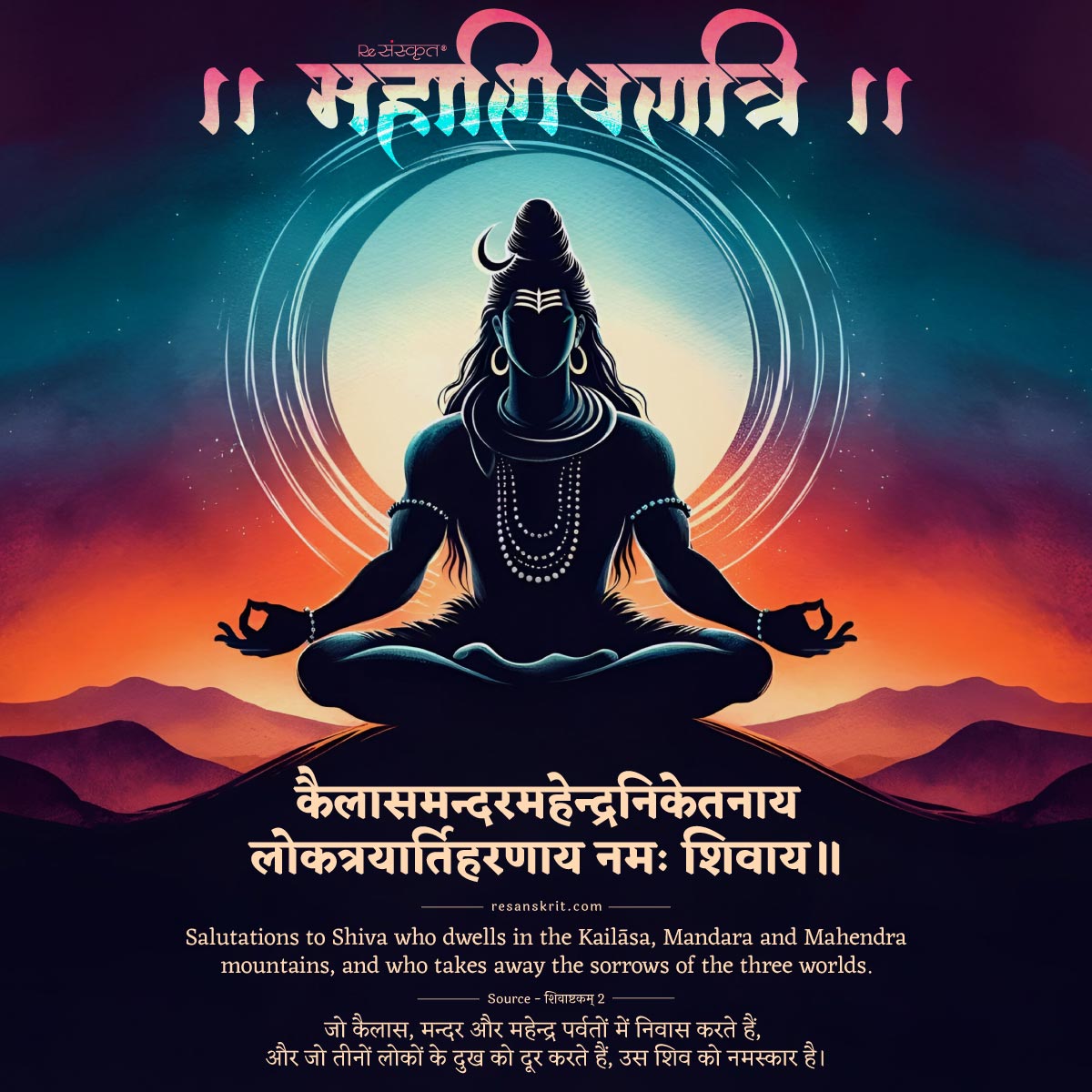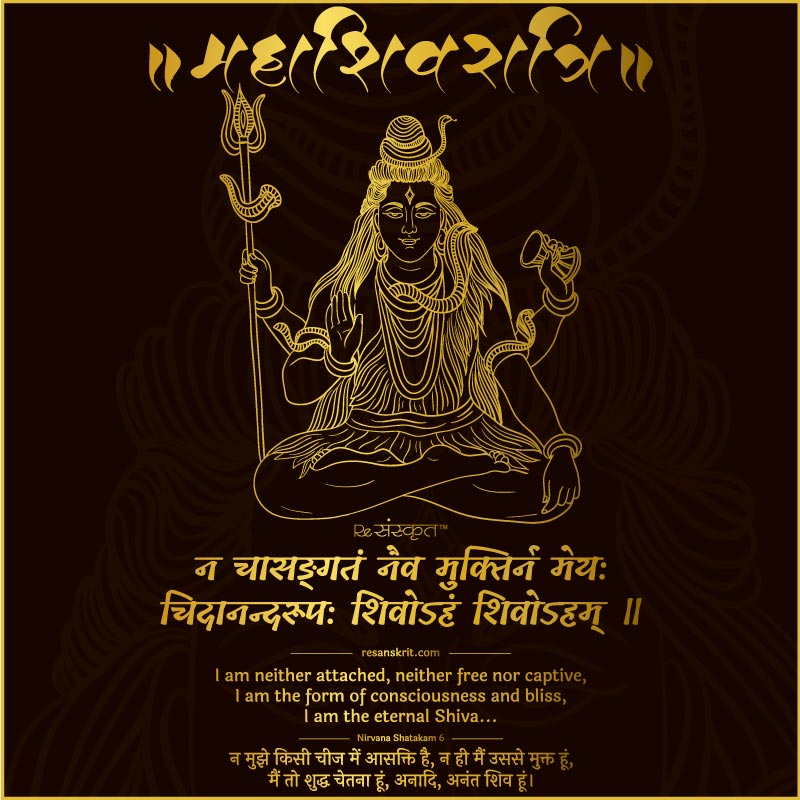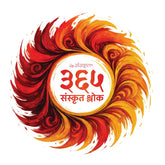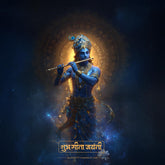Maha Shivratri 2025 - What is Shiva? A Perspective on The Concept

Introduction
He’s probably the only deity that has the capability to make a filmy entrance at any given time in his natural form. that’s probably one of the many ways we see Shiva, quite literally one of the most unique deities to have ever been worshipped. Shiva!
Nataraja, Kalabhairava, Shankar, Mahadeva, Rudra or Dhakshinamoorthy, Shiva is associated with many names and each name evokes a completely different emotion in us, unlike other god figures which have a set perception.
Hence it begs the question, who is Shiva? Or what is Shiva? and more importantly why Shiva? We shall try to arrive at an answer through this article
Side note – We won’t be getting into much about the stories (that depict Lord Shiva’s appearance). You can read them here.
As a part of Trinity
Even if you know the least about Hindutva, you’ll know that the three principal deities that constitute Hindutva are the Trimurti or the holy trinity. They are constituted by Brahma the creator, Vishnu the organizer/administrator, and Shiva the destroyer.
The Aswatha Vruksha Stotram or peepal tree chant accounts thus of them in its very first verse as follows,
मूलते ब्रह्म रूपाय मध्यतो विश्णु रूपिणे
।
अघ्रते शिव रूपाय वृक्षराजाय तेनम: ॥
Transliteration:
mūlate brahma
rūpāya
madhyato viśṇu rūpiṇe ।
aghrate śiva rūpāya vṛkṣarājāya tenama: ॥
English
Translation:
My salutations to the king of trees.
Whose root is the form
of Brahma,
Middle is the form of Lord Vishnu,
And top is the form
of Lord Shiva.
This verse takes a tree, in this case, a Peepal tree (also called as Bodhi Tree) as a metaphor for life, hence it compares the stages of life with the Trimurti as it grows.
The मूल or the roots as Brahma for it is responsible for the creation of the plant i.e. its life is caused due to life, implying creation.
Then the trunk of the tree or the मध्य is called Vishnu because he is supposed to be the administrator, the way this works is that the growth of the tree in the direction of the sun i.e. life is administered by Vishnu.
The fire of life drawn from the roots travels through the Stem and finally culminates in the Top, in the form of branches the mini administrators, the leaves, the flowers, the fruits, and its seeds, seeking Laya (balance) with the Prakruti (nature). The act of bringing balance to life is the responsibility of Shiva, hence he is called लयकारक (layakāraka)!
Side note – It is for this very reason that the Peepal (Sacred fig) tree is called the king of trees or वृक्षराज (vṛkṣarāja)!
As a part of you..
This idea is quite conveniently placed in the Taittariya Upanishad in its Namaka Stotram’s Laghunyasa as follows,
सर्वेष्वङ्गेषु सर्वा देवता यथास्थानं तिष्ठन्तु
। (sarveṣvaṅgeṣu sarvā devatā yathāsthānaṃ
tiṣṭhantu)
i.e. Each god in a human being occupies a certain organ in our body as
follows. Observe how Shiva is placed,
हस्तयोर्हरस्तिष्ठतु
। (hastayorharastiṣṭhatu)
i.e. Hara/ Shiva resides
in your hands. For the hands perform any task human.
हृदये शिवस्तिष्ठतु । (hṛdaye
śivastiṣṭhatu)
i.e. Shiva (the purest one of all) resides in your heart.
शिरसि महादेवस्तिष्ठतु । (śirasi mahādevastiṣṭhatu
।)
i.e. In your head and hence mind Mahadeva/ Shiva resides.
Note how Shiva is positioned in organs most responsible for human activities (Karma)!
Hence Acharya Shankara rightly proclaims “शिवोऽहम्” or I AM SHIVA.

Shiva – the closest divinity to humanity
Let us tell you how –
first he is
The king of expression
Shiva dances flamboyantly and gracefully and yet somehow appear completely normal given the situation. ahh! NATARAJA he is. The king of expression. All these expressions of Shiva’s character as NATARAJA, Dakshinamurthy, Rudra, etc are distributaries to a huge river called “Shiva- the Lord who is the closest divinity can get to humanity”.
Our Lord when angry can and has at times caused a destruction of the entire surrounding creation. His wrath is immeasurable. It has been proven time and again. He decapitated his own son because he didn’t allow him in his own home. He later gave him the head of an elephant and made him “Ganesha”.
During the churning of the ocean, he risks it all by offering to hold the extremely strong poison in his throat so that the churning could go about undeterred, the above two incidents are quite opposite to each other on an emotional graph.
Most forgiving god of them all
And at the same time, he’s also the most forgiving god of them all. He’s known to be the easiest god to please. He’ll appear before you even before Vishnu starts to observe you or Brahma takes notice. Remember Bhasmasura? The dude who easily won Shiva with simple penance and got the boon that’d kill anyone whose head he’d touch with his palm and then wanted to try it out on Shiva himself and the latter had to run to Vishnu for help who later had to turn into Mohini to kill Bhasmasura!
Many demons from yore have attained their strengths by simply penancing on Shiva. But all this doesn’t mean he’ll just give anyone whatever in the world they’d want. With Pippadala, the son of Dadhichi (Of Vajrayudha fame) wanted to avenge the supposed murder of his father, he requested Shiva to (again, according to one legend) open his third eye and destroy Amaravati (capital of heaven).
We are alike!
All this combined brings us here, observe all of the above-mentioned stories, we can’t help but notice the similarities between his lifestyle and ours. We’re equally eccentric. We’re both easy to please (humans get attracted to shiny objects and get pleased by it easily). We’re equally rugged. We too do patchwork (Go Green yo!) to protect our world.
What we’re trying to get at is, we find ourselves so similar to Shiva and thus chant “Shivoham” to sum it all up. This raises the question, aren’t we all in a way Shiva? Are we the fierce Kalabhairava and the ever calm Shankara and still find time to be the omniscient Dakshinamurthy? We are! We have!
The advancements from history stand proof, right from the Mahabharata to the World Wars, we have been pretty destructive and angry at each other. He has been Dakshinamurthy through people like Aryabhata, Buddha (yes! Yes! He is Vishnu’s incarnation, but on paper, he was a man who lived in the past) to most recently Ramanujan and Einstein. He has been Shankara through us common folk, who just want to mind our businesses and be about it. He’s been Layakaraka (grammatically and colloquially) through the likes of Ashoka, freedom fighters, and other peacemakers. He’s been ‘Rudra’ the destroyer by causing natural calamities and other events of destruction and has in ways brought balance to the system.
Celebrating Maha Shivratri with Sanskrit quotes

वेदसारशिवस्तोत्रम् 5
तमीशं भजे लीयते यत्र विश्वम्।
Transliteration
–
tamīśaṃ bhaje līyate yatra viśvam।
English
Translation
I sing in praise of the Lord (Shiva), in whom the universe merges
homogeneously.
Hindi
translation
–
मैं उस प्रभु (शिव) की स्तुति गाता हूँ, जिसमें विश्व विलीन हो जाता है।

Shivashtakam 2 (शिवाष्टकम् 2)
श्रीमत्प्रसन्नशशिपन्नगभूषणाय
शैलेन्द्रजावदनचुम्बितलोचनाय।
कैलासमन्दरमहेन्द्रनिकेतनाय
लोकत्रयार्तिहरणाय नमः शिवाय॥
Transliteration
–
śrīmatprasannaśaśipannagabhūṣaṇāya
śailendrajāvadanacumbitalocanāya।
kailāsamandaramahendraniketanāya
lokatrayārtiharaṇāya namaḥ śivāya॥
English
Translation
Salutations to Śiva,
who is adorned with the beautiful moon and serpents,
whose eyes kiss Pārvatī’s face, who dwells in the Kailāsa,
Mandara and Mahendra mountains, and who takes away the sorrows of the
three worlds.
Hindi
translation
–
जो सुन्दर चन्द्रमा और नागों से सुशोभित है,
जिसकी आँखें पार्वती के चेहरे को चूमती हैं,
जो कैलास, मन्दर और महेन्द्र पर्वतों में निवास करता है,
और जो तीनों लोकों के दुख को दूर करता है, उस शिव को नमस्कार है।

Nirvana Shatakam 3/2 (निर्वाणषट्कम् ३/२)
न धर्मो न चार्थो न कामो न मोक्षः
चिदानन्दरूपः शिवोऽहं शिवोऽहम्॥
Transliteration
–
na dharmo na cārtho na kāmo na mokṣaḥ
cidānandarūpaḥ
śivo'haṃ śivo'ham॥
English
Translatio
I am beyond righteousness, wealth,
desire and liberation.
I am blissful consciousness. I am Śiva; I am
Śiva.
Hindi
translation
–
मैं धर्म, अर्थ, काम एवं मोक्ष से परे हूँ।
मैं
आनन्दमय चेतना हूँ। मैं शिव हूँ, मैं शिव हूँ।

Bring Sanskrit home!
ReSanskrit merchandise starting at ₹ 229.
Buy
Now!

Rudrashtakam 8
न जानामि योगं जपं नैव पूजां
नतोऽहं सदा सर्वदा शम्भुतुभ्यम्।
जराजन्मदुःखौघ तातप्यमानं
प्रभो पाहि आपन्नमामीश शम्भो॥ (रुद्राष्टकम् 8)
Transliteration
–
na jānāmi yogaṃ japaṃ naiva pūjāṃ
nato'haṃ sadā
sarvadā śambhutubhyam।
jarājanmaduḥkhaugha tātapyamānaṃ
prabho
pāhi āpannamāmīśa śambho॥ (rudrāṣṭakam 8)
English
Translatio
I do not know how to perform yoga,
chanting or worship (but) I always and at all times bow to you, O
Śambhu.
From the sorrows of birth and old age; from the sins that
lead to sufferings.
O Shambhu, protect me from these afflictions.
Hindi
translation
–
मुझे नहीं पता कि योग, जप या पूजा कैसे करना है (लेकिन) हे
शंभु,
मैं हमेशा और हर समय आपको नमन करता हूँ।
हे शंभु, कृपया मुझे
जन्म तथा वृद्धावस्था के दुखों से,
और पीड़ा का कारण बनने वाले पापों
से बचाएँ।

Shiva Dhyan Mantra
करचरण कृतं वाक्कायजं कर्मजं वा
।
श्रवणनयनजं वा मानसं वापराधं
॥
विहितमविहितं वा सर्वमेतत्क्षमस्व
।
जय जय करुणाब्धे श्रीमहादेव शम्भो ॥
Transliteration
–
karacaraṇa kṛtaṃ vākkāyajaṃ karmajaṃ vā
।
śravaṇanayanajaṃ vā mānasaṃ vāparādhaṃ ।
vihitamavihitaṃ vā
sarvametatkṣamasva ।
jaya jaya karuṇābdhe śrīmahādeva śambho ॥
English
Translation
–
Oh Lord Shiva, glory to you the greatest of all Gods,
who is the ocean of kindness. Please forgive all the sins done by my
hands or feet, or words, those born of my eyes, ears, and mind and those
performed by my actions, knowingly or unknowingly.
Hindi
translation
–
हे भगवान शिव, आप दया के सागर हैं। कृपया मेरे हाथ या पैर,
या शब्द, मेरी आँखों, कानों और दिमाग से पैदा हुई सभी गलतियों और मेरे
कर्म, जो जाने या अनजाने में किए गए हैं, उन्हें क्षमा करें।

Bring Sanskrit home!
ReSanskrit merchandise starting at ₹ 229.
Buy
Now!

Nirvana Shatakam 6
अहं निर्विकल्पो निराकाररूपो
विभुत्वाच्च सर्वत्र सर्वेन्द्रियाणाम ।
न चासङ्गतं नैव मुक्तिर्न
मेयः चिदानन्दरूपः शिवोऽहं शिवोऽहम् ॥
Transliteration
–
ahaṃ nirvikalpo nirākārarūpo vibhutvācca sarvatra
sarvendriyāṇāma ।
na cāsaṅgataṃ naiva muktirna meyaḥ cidānandarūpaḥ
śivo’haṃ śivo’ham ॥
English
Translation
–
I am devoid of duality, my form is formlessness, I exist
everywhere, pervading all senses, I am neither attached, neither free
nor captive, I am the form of consciousness and bliss, I am the eternal
Shiva…
Hindi
translation
–
मैं निर्विकल्प हूं, निराकार हूं, मैं चैतन्य के रूप में
सब जगह व्याप्त हूं, सभी इन्द्रियों में हूं,
न मुझे किसी चीज में
आसक्ति है, न ही मैं उससे मुक्त हूं, मैं तो शुद्ध चेतना हूं,
अनादि,
अनंत शिव हूं।
Conclusion
He’s taught us valuable lessons in life through his sometimes impulsive acts. To those atheists out there, assuming the non-existence of god, see around you, observe Shiva’s traits it’s a walking collection of everything so imperfectly perfect human traits that we humans read as psychology.
Hence “I am Shiva, so are you” hence “सर्वम् शिवमयम् ” i.e. everything is Shiva, is rightly used.
If you liked our article, please share and let us know your feedback in the comments below.





![[New Edition] ReSanskrit® 365 Days of Sanskrit Wisdom | Daily Sanskrit Quotes | With 100+ New Quotes, Hindi & English Translations🆕](http://resanskrit.myshopify.com/cdn/shop/files/365-calendar-resanskrit-front-hero-shot_533x.jpg?v=1762351171)
![[New Edition] ReSanskrit® 365 Days of Sanskrit Wisdom | Daily Sanskrit Quotes | With 100+ New Quotes, Hindi & English Translations🆕](http://resanskrit.myshopify.com/cdn/shop/files/365-calendar-resanskrit-quote-shot1_533x.jpg?v=1762351193)

![[Please Read Note] 2025 - Hindu Wall Calendar (Vikram Samvat 2081-82) - ReSanskrit](http://resanskrit.myshopify.com/cdn/shop/files/Month-image_3_533x.jpg?v=1738386056)
![[Please Read Note] 2025 - Hindu Wall Calendar (Vikram Samvat 2081-82) - ReSanskrit](http://resanskrit.myshopify.com/cdn/shop/files/Hero-image_1_withmessage_533x.jpg?v=1738386056)






![[Part 2] Relevant Sanskrit Shlokas with Meaning in Hindi & English](http://resanskrit.myshopify.com/cdn/shop/articles/Relevant-Sanskrit-Shlokas-Article-Cover-image-part-2_4499da7e-f9d9-46a6-b615-35f58befb606_165x.jpg?v=1765027232)
7 Comments
All good excellent content , but how Ashoka was a peaceful king , I doubt , then Gautama being a avatar of Vishnu is not the Gautama budha , as u have mentioned partially
Hats off to the visualisation and the way you narrate the whole Shiv concept . It’s beautiful..💫
I love sanskrit quites and creativity. Keep up the good work 👏
Resanskrit is always my favorite for it’s religious post, bt i request that plz don’t use modern day images of our GOD, as you used lord Shiv Image this time…
It’s a humble request from your follower..
Leave a comment
Please note, comments need to be approved before they are published.